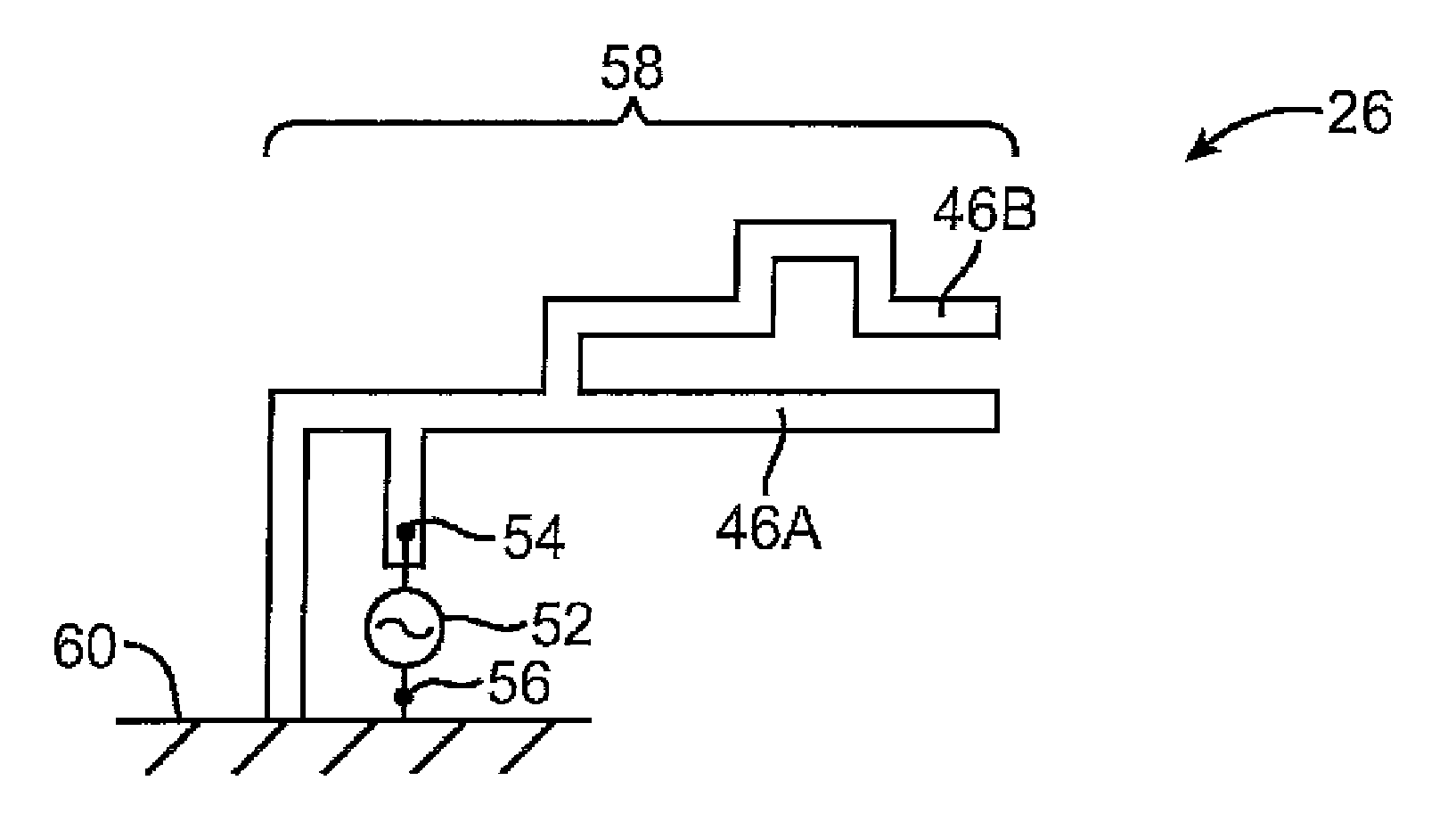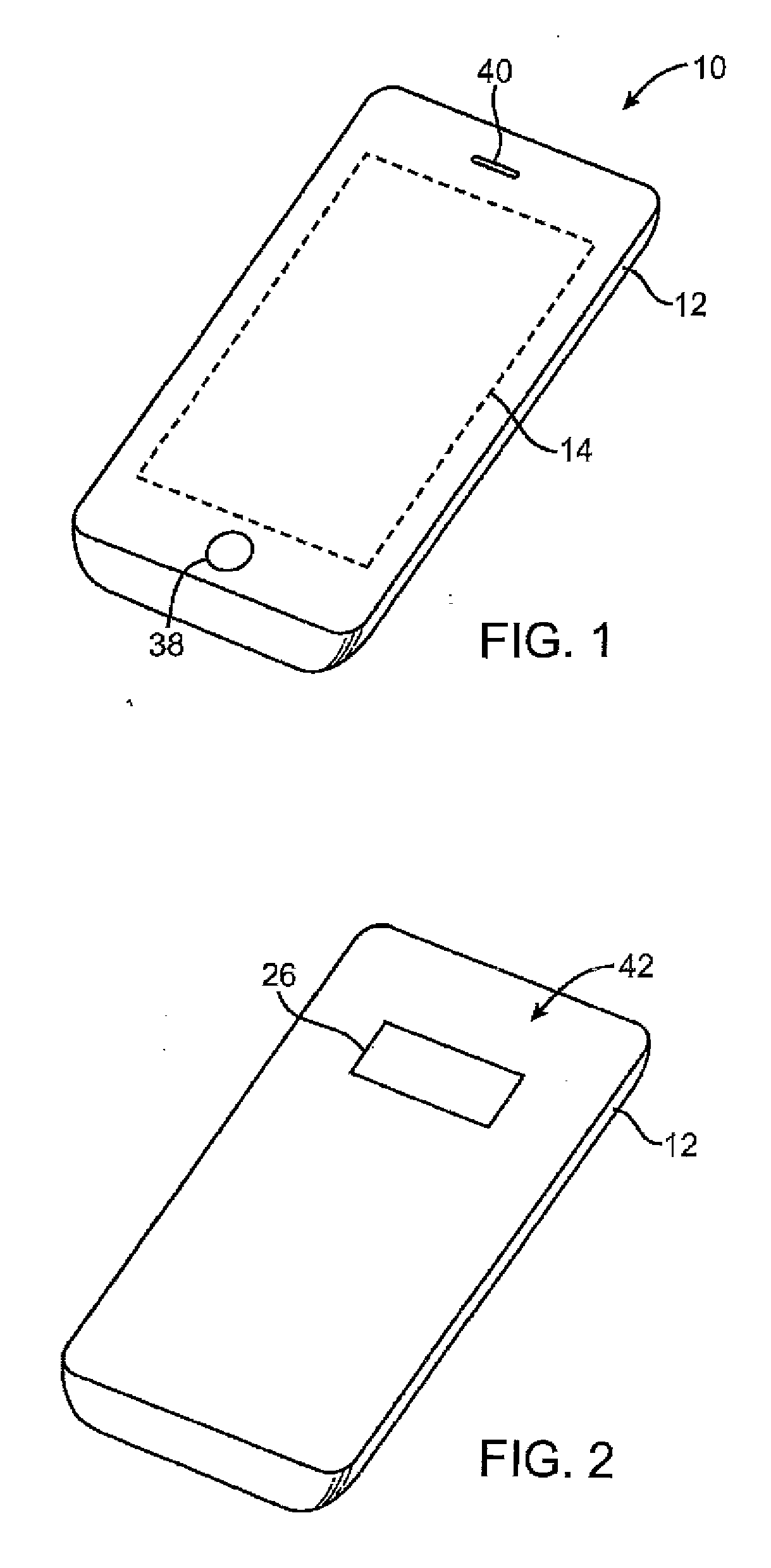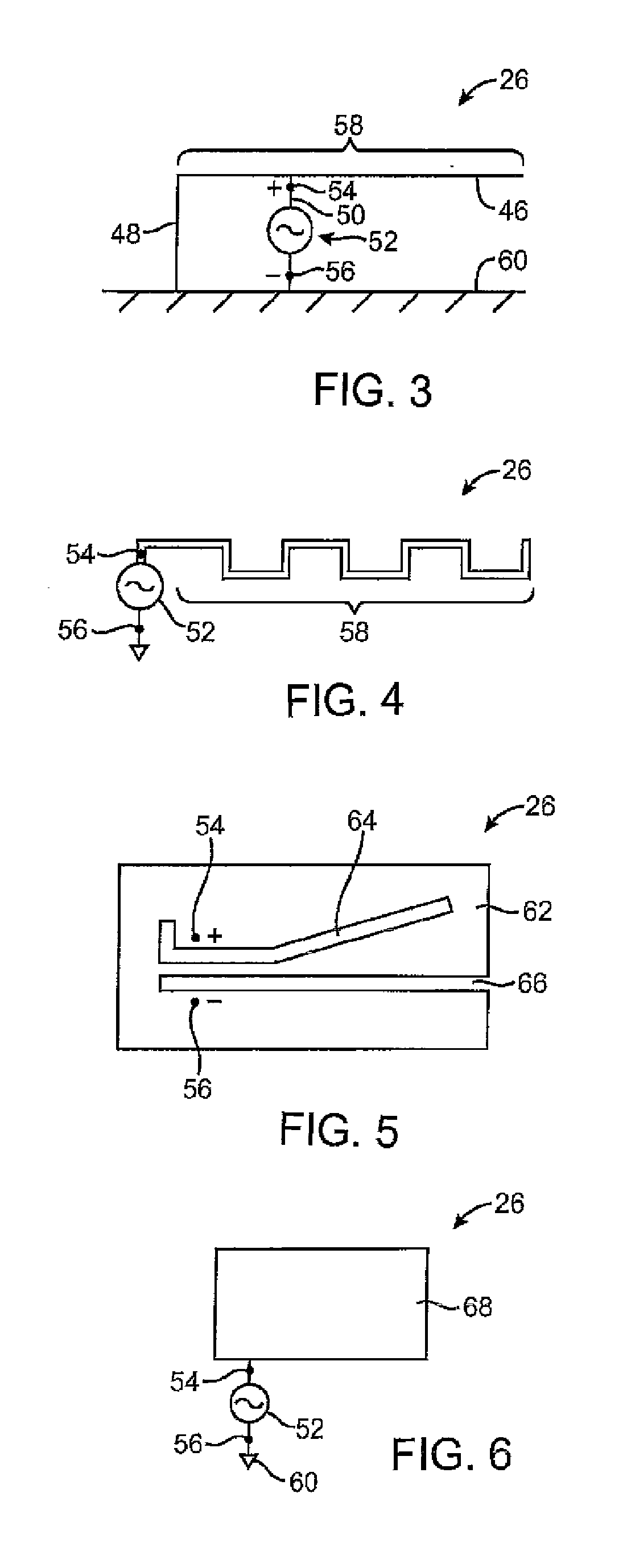Thermoplastic Composition for Use in Forming a Laser Direct Structured Substrate
a technology of thermoplastic composition and structured substrate, which is applied in the direction of thermoplastic polymer dielectrics, resonance antennas, synthetic resin layered products, etc., can solve the problems of difficult laser direct structuring process use, unsuitable materials for lead free soldering process, and save space for smaller devices
- Summary
- Abstract
- Description
- Claims
- Application Information
AI Technical Summary
Benefits of technology
Problems solved by technology
Method used
Image
Examples
example 1
[0080]A thermoplastic composition is formed from 55.5 wt. % of a liquid crystalline polymer, 38.5 wt. % talc, and 6.0 wt. % of a copper chromite filler (CuCr2O4) available from Shepherd Color Co. under the designation Shepherd 1GM. The liquid crystalline polymer is formed from 4-hydroxybenzoic acid (“HBA”), 2,6-hydroxynaphthoic acid (“HNA”), terephthalic acid (“TA”), 4,4′-biphenol (“BP”), and acetaminophen (“APAP”), such as described in U.S. Pat. No. 5,508,374 to Lee, et al. The HNA content is 5 mol. %.
example 2
[0081]A thermoplastic composition is formed from 59.0 wt. % of a liquid crystalline polymer, 15.0 wt. % talc, 20.0 wt. % glass fibers and 6.0 wt % of a copper chromite filler (Shepherd IGM). The glass fibers are Advantex™ E glass, which are available from Owens Corning Vetrotex. The liquid crystalline polymer is the same polymer employed in Example 1. After formation of the composition, the weight average length of the glass fibers was tested and determined to be 340 micrometers (1 std. deviation of 160 micrometers).
example 3
[0082]A thermoplastic composition is formed from 59.0 wt. % of a liquid crystalline polymer, 15.0 wt. % talc, 20.0 wt. % milled glass fibers having a weight average fiber length of from 50 to 80 μm, and 6.0 wt. % of a copper chromite filler (Shepherd IGM). The liquid crystalline polymer is the same polymer employed in Example 1.
PUM
| Property | Measurement | Unit |
|---|---|---|
| deflection temperature | aaaaa | aaaaa |
| dielectric constant | aaaaa | aaaaa |
| aspect ratio | aaaaa | aaaaa |
Abstract
Description
Claims
Application Information
 Login to View More
Login to View More - R&D
- Intellectual Property
- Life Sciences
- Materials
- Tech Scout
- Unparalleled Data Quality
- Higher Quality Content
- 60% Fewer Hallucinations
Browse by: Latest US Patents, China's latest patents, Technical Efficacy Thesaurus, Application Domain, Technology Topic, Popular Technical Reports.
© 2025 PatSnap. All rights reserved.Legal|Privacy policy|Modern Slavery Act Transparency Statement|Sitemap|About US| Contact US: help@patsnap.com



